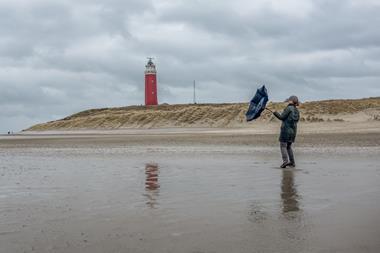Pension funds must stick to their strategic asset allocation and are not allowed to reduce investment risk too much. Their investment strategies must remain in line with their pre-determined risk appetite, according to pension regulator DNB.
Many a pension fund wants to dial down investment risk in the period before making the transition to the new defined contribution (DC) system to minimise the chance of a sudden drop of its funding ratio.
Pension funds tend to do this by either increasing their interest rate hedge or by reducing their equity exposure, or a combination of both. An example of a pension fund that has done this is Philips pension fund, which sold part of its equity portfolio as early as 2021 to protect its funding ratio.
Risk appetite
But a pension fund has no free rein to reduce risk, according to DNB. Risk may only be reduced to a certain extent, as long as the investment risk remains within the framework of the fund’s existing risk appetite which has been drawn up in consultation with the fund’s social partners.
This also applies to so-called “temporary derisking” in the run-up to the transition to a DC arrangement, a spokesperson for DNB added.

“The risk appetite indicates the framework within which a pension fund’s board has discretionary powers to revise its risk profile without having to coordinate this with social partners,” WTW actuary Wichert Hoekert explained.
“In addition, the bandwidths to the strategic policy, which funds use when rebalancing the portfolio, also apply as limits,” he said. Most pension funds have only a limited bandwidth to change their strategic asset allocation. “As a rule, this is about 5-10% for each asset class,” he added.
Some funds that have reduced investment risk as part of the pension transition have stayed within the boundaries of their existing risk appetite.
The hospitality industry scheme Horeca & Catering increased its interest rate hedge from 50% to 80% this year. According to a spokesperson for the fund, the higher hedge “corresponds to the highest degree of interest rate hedging in the fund’s existing strategic dynamic interest rate hedging policy.” Therefore, the fund’s risk appetite did not need a reset.
Horeca & Catering seems to be an exception in this respect, noted Marc Stougie, a pension fund consultant at Sprenkels.
“We see that this issue is on the table at almost all funds. Most of them must indeed redefine their risk appetite,” he said.

An example of a fund that has had to reset its risk appetite because of a proposed temporary change in investment policy is SPOA, the fund for pharmacists.
In order to be allowed to do this, the fund had to seek permission from social partners, in this case the professional association of pharmacists, to ask for an adjustment of the risk appetite. After the association granted this request last month, the fund moved to reduce investment risk by buying additional interest rate swaps and selling put options to insulate itself against a stock market crash.
According to Stougie, adjusting the risk appetite will in most cases take at least two months.
“Pension funds also have to weigh up whether such a decision is balanced: is it in the interest of all participant groups to take back risk?”, noted WTW’s Hoekert. In addition, the social partners and the fund’s accountability body and supervisory board also still have to give their approval for changing the risk appetite.
APG staff fund
Like SPOA, the staff pension fund of pension asset manager APG has also already successfully managed this process. The fund increased its interest rate hedge to 80% late last year and also sharply scaled back its equity risk until its planned transition date of 1 January 2025. Before it was able to do this, the fund had to reset its risk appetite.
“Normally, this would take a lot of effort, but because we had been busy implementing the new pension law, we were already in frequent contact with social partners, our accountability body and supervisory board anyway,” said the fund’s president, Tinka den Arend.

Loodsen, the pension fund for shipping pilots, which also plans to move to a DC arrangement on 1 January 2025, may also have to reset its risk appetite if it wants to take back additional risk in the coming months.
The fund previously increased its interest rate hedge to 100%, staying within the framework of its existing risk appetite, according to the pension fund’s director, Rajesh Grobbe.
“We are now investigating whether this would still apply if we were to set up a hedging construction for our equity portfolio too,” he added.
This article was first published on Pensioen Pro, IPE’s Dutch sister publication.
























